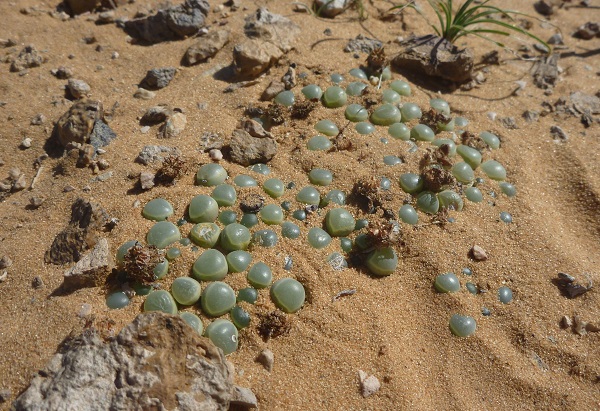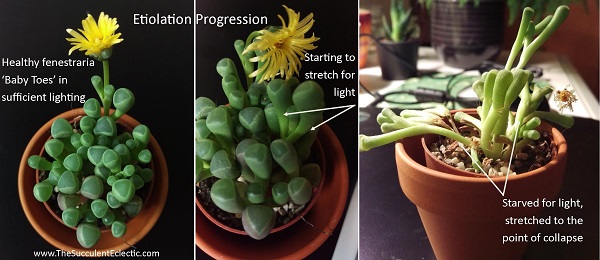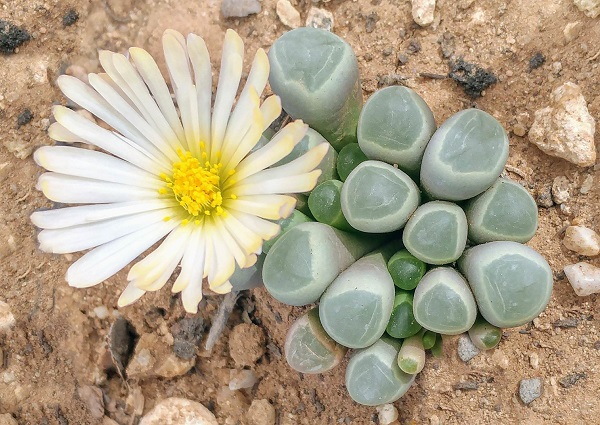How to Grow Baby Toes Plants
Baby Toes plants (Fenestraria rhopalophylla) are charming succulents native to the Namaqualand region of Namibia and South Africa. Their cute, pudgy leaves resembling tiny toes make them popular among succulent enthusiasts. Despite their delicate appearance, these plants are remarkably tough when grown properly.
Understanding Baby Toes Plants
Baby Toes plants belong to the Aizoaceae family and are considered “mesembs” (formerly Mesembryanthemaceae). These fascinating succulents grow only about 2-2.5 inches (5-6.4 cm) tall when healthy and feature:
- Club-shaped, cylindrical leaves with translucent “windows” at the tips
- Windowed leaf tips that allow sunlight to penetrate for photosynthesis
- A shallow but extensive root system that’s adapted to capture sparse moisture
- Clusters of leaves that grow from a central point, forming attractive clumps

In their natural desert habitat, Baby Toes grow almost completely buried in sand with only their transparent leaf tips exposed above the surface. This adaptation protects the plant from harsh sunlight while still allowing photosynthesis to occur. When grown in cultivation, however, you should not bury them this deeply.
Essential Care Requirements
1. Light Requirements

Baby Toes need abundant light to maintain their compact growth form:
- Outdoor growing: Full to partial sun with at least 5-6 hours of direct sunlight daily
- Indoor growing: Place near a south-facing window (in Northern Hemisphere)
- Warning signs of insufficient light: Leaves become elongated and may eventually collapse (etiolation)
- Winter care: Provide grow lights if bringing indoors during cold months
Without adequate light, Baby Toes will stretch dramatically, losing their characteristic compact shape. Unlike other succulents that develop stems when etiolated, Baby Toes’ leaves themselves stretch, which can cause them to collapse and die.
2. Watering Requirements
Baby Toes have specific watering needs tied to their growth cycle:
- Active growth period: Fall through spring (winter grower)
- Dormancy period: Summer (reduce watering significantly)
- Watering method: “Soak and dry” – thoroughly water when soil is completely dry
- Signs plant needs water: Leaf tips become slightly wrinkled/shrunken
- Signs of overwatering: Split leaves, leaf rot, mushy appearance
Important: Never water during summer dormancy as this can lead to root rot and plant death. Baby Toes store water in their leaves, making them drought-tolerant but susceptible to overwatering problems.
3. Soil Requirements

The right soil mix is critical for Baby Toes success:
- Avoid: Regular potting soil, moisture-retaining mixes with peat moss or loam
- Use: Well-draining cactus/succulent soil mix
- DIY soil recipe: Equal parts potting soil, pumice, perlite, and coarse sand
- Container: Always use pots with drainage holes
Since Baby Toes have shallow roots and are highly susceptible to root rot, proper drainage is essential for their survival.
4. Temperature Requirements
Baby Toes have moderate temperature preferences:
- Ideal range: 65-80°F (18-27°C)
- Cold tolerance: Can survive brief exposure to light frost but prefer temperatures above 30°F (-1.1°C)
- Best growth: Moderate temperatures during fall, winter, and spring
If you live in a region with freezing winters, grow Baby Toes in containers that can be brought indoors during cold periods.
5. Fertilizing
Baby Toes need minimal fertilization:
- When: Early spring during active growth
- What: Half-strength cactus/succulent fertilizer
- Frequency: Once per year is typically sufficient
Over-fertilizing can cause excessive growth and split leaves, so less is more with these succulents.
Propagation Methods

1. Offset Division (Recommended)
The most reliable method for propagating Baby Toes:
- Identify healthy offsets (baby plants) forming at the base of the mother plant
- Using a clean, sharp knife, carefully separate the offset from the main plant
- Allow the cut surface to callus (dry) for 1-2 days
- Plant the offset in well-draining succulent soil
- Wait 1-2 weeks before watering lightly
- Gradually increase water as the plant establishes roots
2. Seed Propagation (Challenging)
While possible, growing Baby Toes from seed is difficult and slow:
- Obtain fresh seeds from a reputable source
- Prepare a well-draining seed-starting mix (similar to adult plant soil)
- Sow seeds on the soil surface in fall (their active growing season)
- Cover very lightly with a thin layer of sand
- Keep slightly moist until germination occurs
- Be prepared for slow growth – seedlings develop extremely slowly
Seed propagation is generally not recommended for impatient gardeners, as it can take years for seedlings to reach a decent size.
Common Problems and Solutions
1. Splitting Leaves
Cause: Overwatering, especially during dormancy
Solution: Reduce watering frequency, ensure soil dries completely between waterings
2. Elongated Growth (Etiolation)
Cause: Insufficient light
Solution: Move to a sunnier location or provide grow lights; severely stretched plants may not recover
3. Soft, Mushy Leaves
Cause: Root rot from overwatering or poor drainage
Solution: Stop watering immediately, check for healthy roots, repot in fresh soil if needed
4. Wrinkled, Shrunken Leaves
Cause: Underwatering during active growth period
Solution: Water thoroughly when soil is completely dry
5. Leaves Falling Over
Cause: Usually a combination of insufficient light and overwatering
Solution: Increase light exposure and adjust watering schedule
Seasonal Growth and Flowering

Baby Toes have a unique growth and flowering cycle:
- Active growth: Fall through spring
- Summer dormancy: Little to no growth, reduced water needs
- Flowering period: Late winter to early spring
- Flower appearance: Daisy-like blooms with long, thin petals in white or yellow
- Flower behavior: Open and close in response to light
With proper care, mature plants may produce showy flowers that open during the day and close in the evening. Flowering requires adequate light exposure and proper watering during the growing season.
Is Fenestraria Safe for Pets?
Good news for pet owners: Baby Toes plants are non-toxic to cats, dogs, and humans. While ingestion should still be avoided, these plants don’t contain compounds that would cause serious harm if accidentally consumed.
Conclusion
Baby Toes plants (Fenestraria rhopalophylla) are fascinating and adorable succulents that thrive with proper care. Remember their key needs: bright light, well-draining soil, and careful watering that respects their seasonal growth cycle. Despite their delicate appearance, these are tough desert plants that prefer neglect over pampering. Follow these guidelines, and you’ll enjoy these charming succulents for years to come. Happy Gardening….







